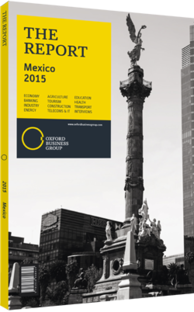Essential facts for visitors to Mexico
Language
Spanish is the official language and is spoken throughout the country. However, there are as many as 62 dialects, the most widely spoken being Nahuatl, Maya and Mixteco. Though English is spoken in many places, especially among government officials and high-ranking executives, it is advisable to learn some basic Spanish before arrival.
Etiquette
A handshake for men and one kiss on the cheek for women is usually the first introduction in a business setting and is used as both a greeting and farewell. Standard business attire is the same as that worn in Europe or the US.
Visa
Citizens from 65 countries are not required to obtain a visa before entering Mexico and can stay up to 180 days for both tourism and business. These countries include the US, the UK, all countries in the Schengen area of the EU and most of those in Latin America. Citizens from other countries should apply for a visa from any Mexican consulate. These too permit a maximum stay of 180 days.
Transport
There are 85 airports in Mexico, 59 of them international. Due to the vast distances there are to travel within a country of nearly 2m sq km, flying is one of the most common modes of transport. Some domestic airlines offer frequent internal flights, but they are not cheap: from Mexico City to Cancún costs about MXN3000 ($202).
The most popular means of transportation is by bus, with close to 1bn tickets sold a year. Passenger trains are currently underdeveloped, though the government is looking to boost rail services. Vehicle traffic, which is heavy throughout Mexico, is especially so in big cities. Mexico City, with its population of more than 20m (the third-largest metropolitan area in the world), grinds to a halt during rush hour. Taxis in Mexico are ubiquitous and very affordable. For their safety and security measures they provide, taxis de sitio (vehicles from a taxi base) are recommended. The metro is very popular among local residents, but tends not to be a first choice for tourists.
Sim Cards
Mexico has four main mobile operators (Telcel, Movistar, Iusacell and Nextel, the latter two now owned by AT&T). All providers have country-wide coverage that includes high-speed internet services and numerous branches. The most popular provider is Telcel, and its SIM cards can be bought at any store selling its products. SIM cards cost around $10 and come with air time. Pre-paid data packages are also available and online re-charging is possible with most carriers.
Currency
The local currency is the peso, with banknotes coming in denominations of 20, 50, 100, 200, 500 and 1000 pesos, and coins from 50 cents up to 10 pesos. Most ATMs accept international bank cards. There are many money exchange offices, but it is advisable to change less common currencies into pesos, euros or dollars before arrival. Many shops and businesses do not accept credit cards, so it is advisable to keep cash on hand. As of September 2015, the exchange rate is $1 to 16.85 pesos.
Tipping
Since restaurant bills usually do not include tips, a 15% gratuity is common. Taxi drivers do not expect to be tipped, but it is common to round up to the next five or 10 pesos. If you have agreed on a fare, there is no need to give extra.
Water
Tap water, though potable, is not recommended for drinking, especially for newcomers as it contains microbes to which visitors need to become accustomed over a long period to avoid health problems. Also worth noting is that Mexico is the world’s largest consumer of bottled water per head. By drinking tap water one risks contracting the infamous “Montezuma’s revenge”, or traveller’s diarrhoea.
Electricity
Electrical outlets are standard 110 V, with the same parallel, flat, two-pin system used in the US. It is advisable to bring adaptors, and most modern electronics are compatible with electric currents of both 110 V and 220 V. For travel in some areas, it is wise to bring electrical stabilisers for important electronics, such as laptop computers.
You have reached the limit of premium articles you can view for free.
Choose from the options below to purchase print or digital editions of our Reports. You can also purchase a website subscription giving you unlimited access to all of our Reports online for 12 months.
If you have already purchased this Report or have a website subscription, please login to continue.

